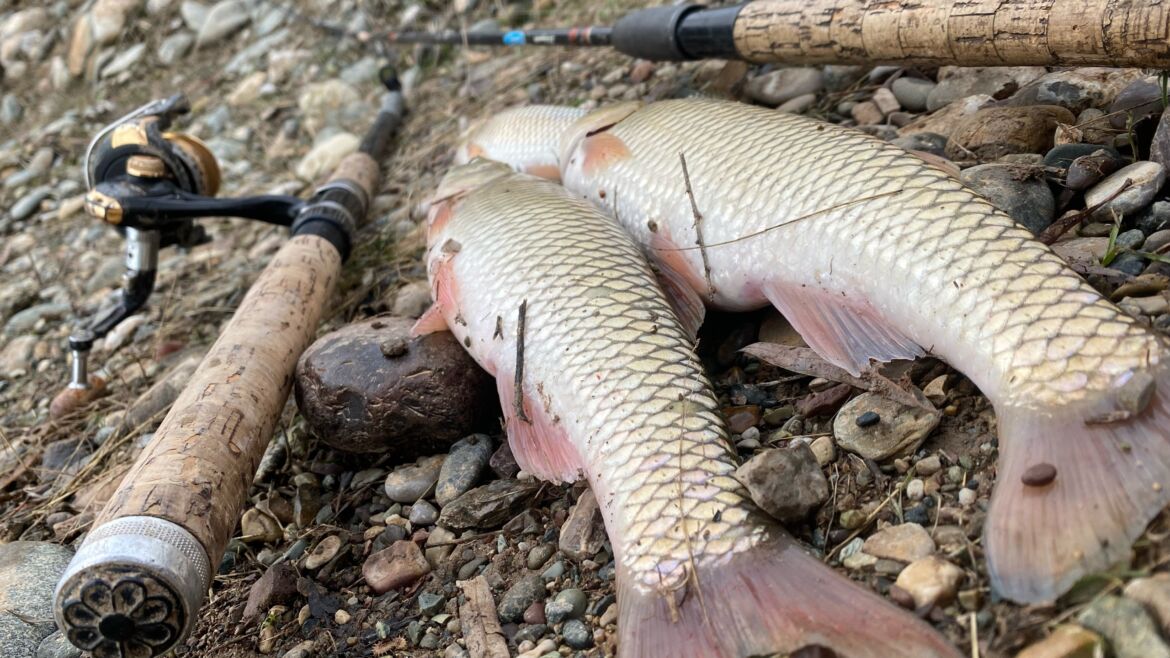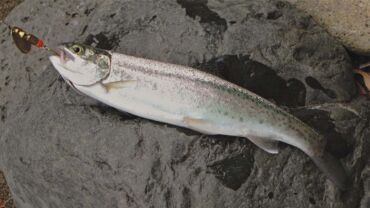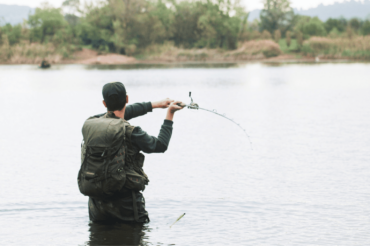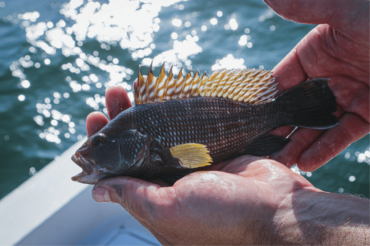Every skilled fisherman understands that success on the water depends on more than just their skills or equipment. Being able to read the weather and conditions can play a major role in the quest to catch that next big fish. To keep these general conditions into account when you plan to fish, our fishing forecast app can help.
From the rain to barometric pressure, our app can help predict the optimal times to fish to find the best success. No matter the conditions, you will have as much data as possible to make your decisions. For example, do fish bite better when it’s raining? How will they react?
Let’s dive into the importance of fishing in the right conditions and the old narrative that fishing is always better in the rain. Is it true, or is this simply an old myth handed down through the years? Let’s take a look at the science and insights from professionals so you can be better prepared no matter what the weather does on your next fishing trip!
Expert Opinions on Fishing in The Rain
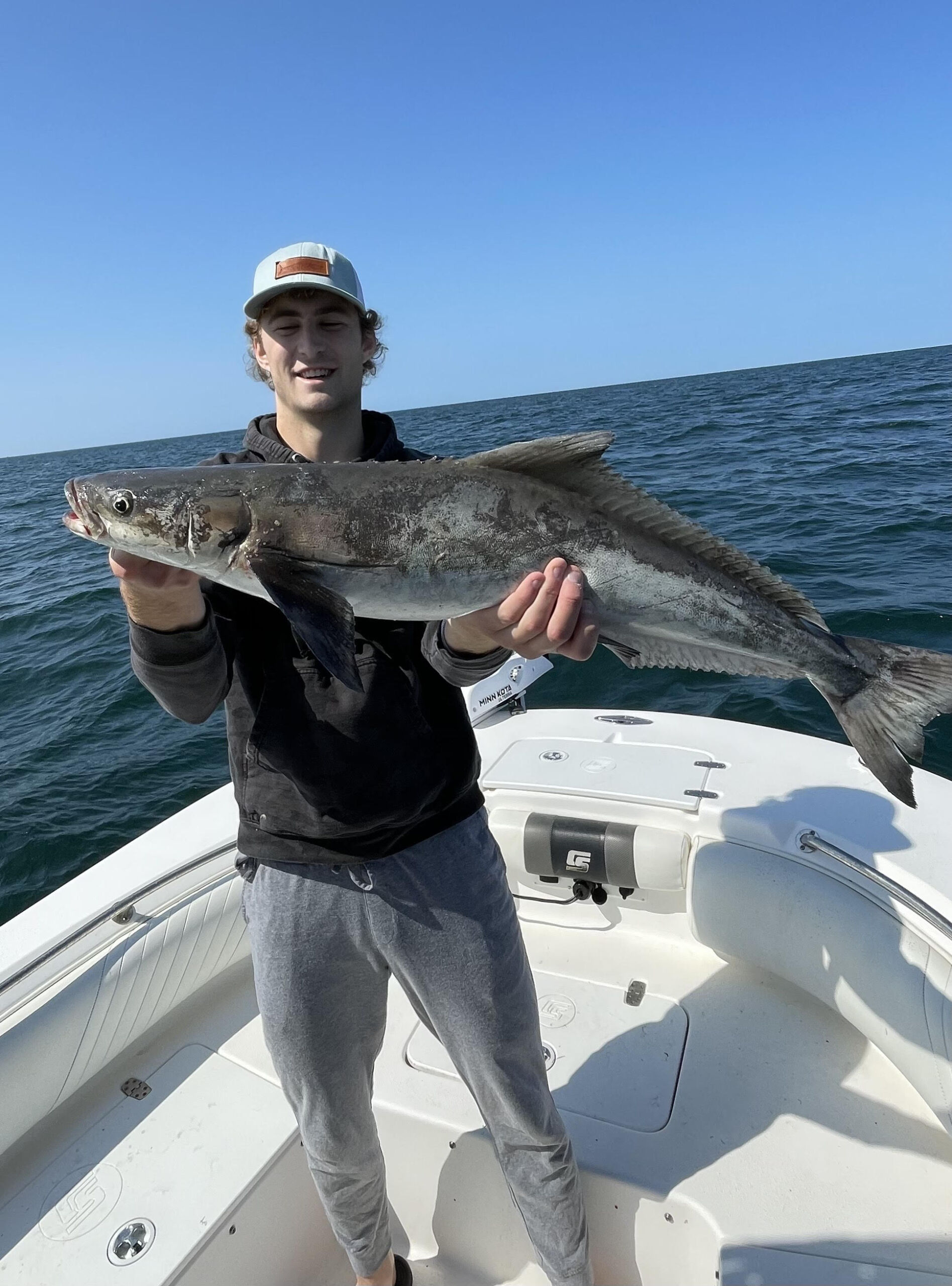
Pierce Latta
16 years fishing experience
“As uncomfortable as fishing in the rain might be, the potential reward might just make it worth sticking out in the inclement weather. I’ve fished for a lot of years and, like it or not, rain is going to affect your fishing at some point in time—it’s inevitable. It’s how you respond to and adapt to changes while you’re fishing (like rain) that can distinguish a good angler from a great angler.
For the sake of this article, I want to give my personal experience with fishing in the rain—but more specifically—bass fishing in the rain as freshwater is accessible to most anglers. Let me run back to a situation I’ve been through countless times while bass fishing.
I’m fishing a soft plastic, working the banks and then all of a sudden some rain clouds roll in, and before you know it, it’s pouring. Now, if it’s not too cold and uncomfortable, stick it out and you will more often than not be rewarded.
So as soon as it starts raining, I’m switching baits and tactics immediately. I don’t want something that’s going to coast through the middle or bottom of the water column where the water is now becoming murky—that is the last thing you want to do. Instead, I will always and have always switched to a “loud” bait—something that’s going to get the fish’s attention. Think of baits like buzz baits, jitterbugs, poppers…you get the idea.
This “loud” class of bait has produced lots and lots of quality bass over the years during or immediately following rain. Once you’ve got one of these baits tied on, don’t be afraid to be aggressive with the action. The rain and surface commotion have already drawn the fish into a more alert state, so the more you can make that bait stand out on the top of the water, the better. I always try to cover as much distance as possible if I can. Try throwing long casts across the pond or on large stretches of bank to yield maximal results.
I have used these strategies for years now and they always seem to produce results. I genuinely don’t know the science behind the rain, but I have enough experience in the field of fishing to know that it turns something on in the fish. When those fish see, feel, and hear that rain pelting the surface of the water, they get hyperactive in a feeding frenzy-like state at times. This is why I believe my strategy of “loud” baits has worked. Those fish are confused, they don’t know what they’re swinging at. They’re just seeing large splashes and going headfirst towards your juicy popper on the top of the water.
So maybe next time, when you’re sitting on the couch playing video games and it starts to rain outside, it might actually be time to put the controller down and take advantage of the better bass bite that happens during a rainstorm. It might be uncomfortable, but it can be worth the wait. Good luck and tight lines!”
Visit his Instagram profile.
Subscribe to his YouTube channel.
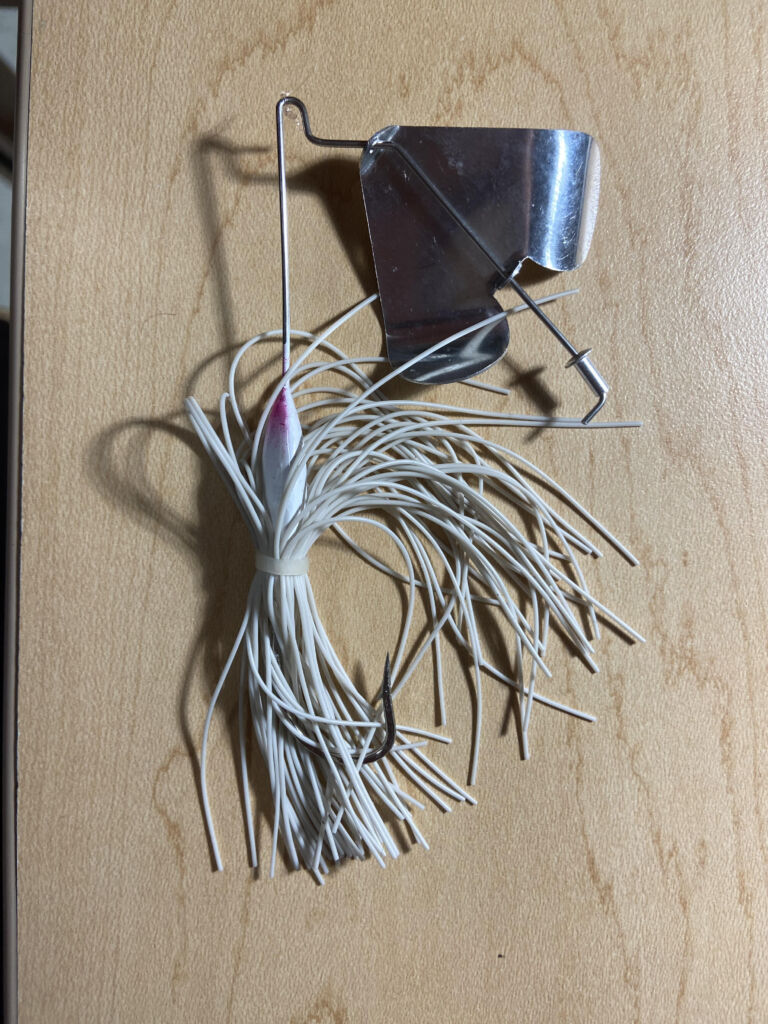
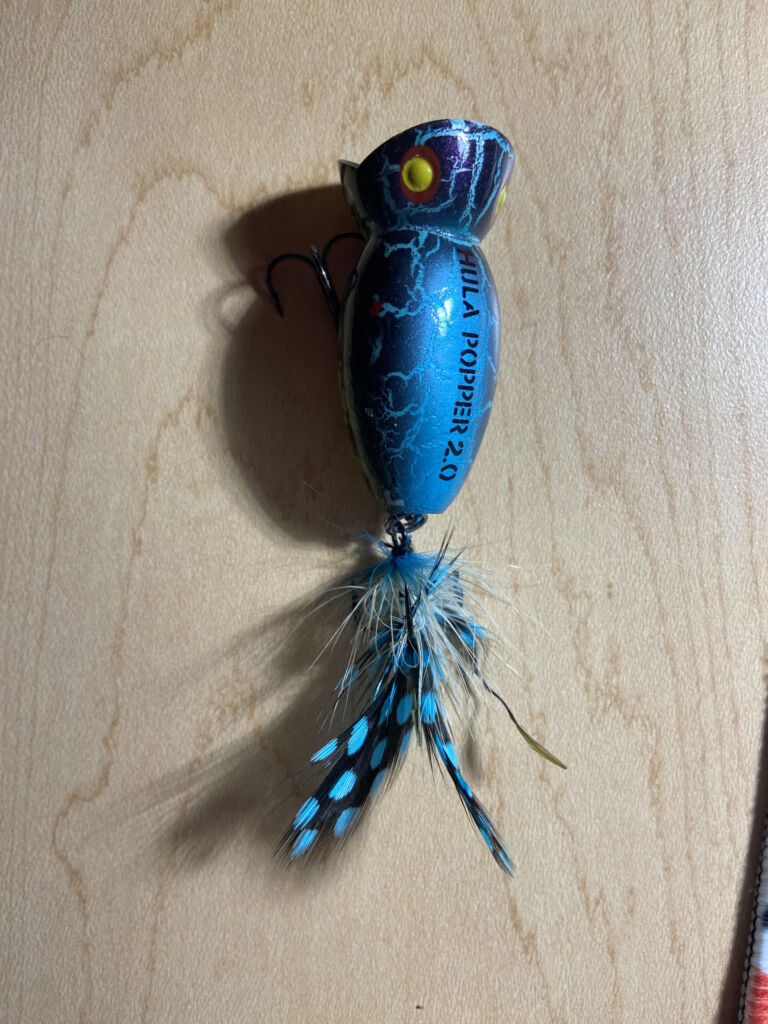
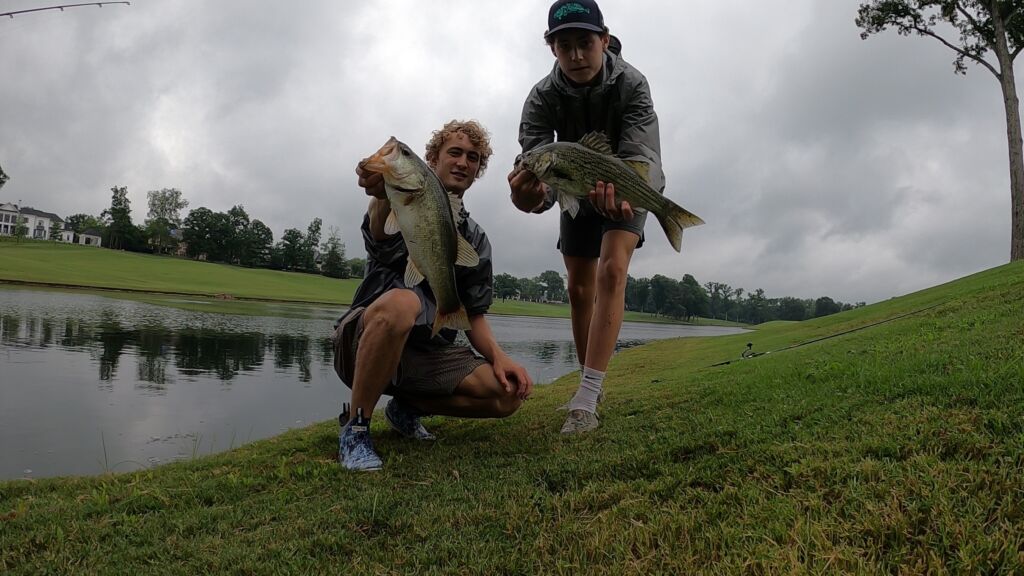
How Rain Affects Fish
It’s no secret that rain affects fish, but why does rain play such a big part in what fish do? When the rain hits the water’s surface, a few different things come into play.
First, rainfall increases the oxygen levels of water which leads to greater fish activity. The more oxygen in the water, the more likely the fish are to bite. The rain can also cool down the temperature of the water, further encouraging fish to break their sluggish behavior. Add in the fact that the water clarity might change, and this means fish are out on the hunt and looking for food when rainy weather rolls in.
Get your personalized fishing map
Answer a quick quiz and get your own personalized fishing map
Rain also has an impact on atmospheric pressure. This is why so many anglers keep an eye on barometric trends to help them figure out when the fish might be more active. Being able to understand these things, as well as your target fish species will help adapt your tactics when some wet weather rolls in and bring much more success.
Advantages of Fishing in the Rain
So what does all this mean for a fisherman? It means that there are plenty of great reasons to get outside when it’s raining. With so many advantages, it’s hard to pick just one but here are a few of our favorites:
- The fish are much more active.
- Less competition from other anglers.
- Cooler weather makes it much more pleasant.
- Less water visibility makes for less cautious fish.
And these are just a few of them! Although fishing in the rain might not be everyone’s first choice, it carries with it plenty of advantages that make it well worth the effort.
Disadvantages of Fishing in the Rain
Like everything, there are two sides to every story. Fishing in the rain can be a challenging ordeal for anglers, so here are a few of the disadvantages of fishing in the rain:
- Muddy water: Heavy rains can stir up silt, sand, and mud making the water murky and reducing your visibility.
- Risk of Lightning: Fishing during a rainstorm can be dangerous if there is lightning, as a strike could be deadly.
- Risk of Slips or Spills: Wet, slippery surfaces abound in the rain which could result in falling or slipping.
- Limited Gear Options: Not all gear is waterproof, so you can run the risk of ruining equipment or not being able to run what you do have.
- Uncomfortable Conditions: Being exposed to constant rain can lead to high levels of discomfort and potentially cause things like hypothermia or cold-related illnesses.
- Equipment Damage: Fishing gear like reels, lines, and all of your electronic devices can be susceptible to damage if they are not properly protected from rain and moisture.
- Challenging Fishing Conditions: Rain affects how fish behave, and can potentially make them less active or more difficult to find. The murky conditions can also make it harder for the fish to spot your bait or lures.
- Limited Options: Bad weather can keep you from accessing some fishing areas, especially when major flooding occurs with rivers and streams. This means more potential challenges in reaching favorite fishing spots.
- Safety Hazards: In addition to the lighting that we mentioned earlier, big storms can cause problems when caught out on open water with exposure.
- Reduced Fishing Enjoyment: Fishing in the rain can be downright draining. It can dampen the overall experience and make it less enjoyable, causing some discouraging moments for those who would do better in fair weather conditions.
Although fishing in the rain brings about a lot of benefits, there are some potential downsides to consider. Above all else, remember to stay safe while fishing in the rain as the added moisture can drastically change the environment!
Useful Tips for a Successful Rainy Day Fishing Trip
So now that we’ve covered the ins and outs of fishing in the rain (and why you should give it a try), what’s the best way to catch something during a drizzle? Here are a few simple tips and tricks that will take your success to the next level!
Bring the Right Gear and Tackle
Fishing in the rain comes with additional challenges, so make sure your gear is up for it. It is essential to bring along the necessary equipment and gear to ensure a safe and enjoyable experience. Here are a few items you should consider taking with you:
Waterproof Items:
- Jacket or raincoat;
- Fishing pants or bib overalls;
- Nonslip boots or waders;
- Hat or cap;
- Gloves;
- Backpack or duffel bag;
- Tackle box or storage container;
- Waterproof cases for electronic devices (e.g. phone, camera, etc.).
Other Items:
- Insulated thermos or water-resistant flask for hot beverages;
- Quick-dry towels for wiping hands and equipment;
- Waterproof matches or lighters for starting a fire;
- Extra clothing layers;
- Battery chargers for phones and other devices;
- First aid kit and emergency items.
Having these items with you can help you stay warm, dry, and comfortable while out fishing in the rain. It’s also vital to check the weather forecast and pack extra clothing layers and supplies to be prepared for any unexpected changes in conditions.
It’s also important to note that specific gear and equipment that is needed for fishing in the rain can vary depending on the type of fishing you intend to do, the location, and the incoming weather conditions. It’s always a good idea to check the forecast and pack accordingly, as well as bring along safety gear like life jackets and emergency whistles.
Read also: Unlocking the Secrets of Perfect Fishing Weather: Best Conditions for a Great Catch
Find the Right Fishing Locations
It’s not uncommon for fish to seek shelter during a drizzle, so finding the right areas to cast a line is crucial to success. Some of the best places to find them in the rain include:
- Undercut banks: Fish love to hide under overhanging banks which provide cover from the rain and overhead predators.
- Submerged structures: Search around fallen trees, submerged logs, and brush piles that are perfect shelters for fish and where they love to hide.
- Aquatic Vegetation: Thick vegetation such as reeds, lily pads, and weed beds provide cover for fish in a rainstorm, allowing them to remain hidden and protected.
- Rock Formations: Look around rocky areas like boulders, ledges, and rock piles. These serve as shelters for fish and protect them from rain and potential predators.
- Deep Pools: Fish will often dive deeper in rivers, streams, and lakes where they can find refuge and a more stable environment with less turbulence in less-than-ideal conditions.
- Bridge Pilings: Bridges and their pilings create sheltered places for fish to hide in the rain, so they can be great places to look when fishing.
- Overhanging Vegetation: Trees, shrubs, and other vegetation that hang over the water can create a canopy that provides protection from rainfall and creates an ideal hiding place.
- Docks and Piers: Fish love hanging around docks and piers, and even more so during a rainstorm.
- Deep Channels: Deeper channels and trenches in the water give fish protection from rain and any other disturbances on the surface.
- Inflowing Streams: Looking for inflowing streams and creeks will provide places that fish look to for shelter and food sources during a storm.
By understanding and searching for these sheltering spots, anglers can better locate and target specific areas where fish are most likely to gather during rainy weather. This will significantly improve their chances of a successful fishing day.
Here are a couple of specific fishing locations that fit the criteria:
- Confluences where clear water meets with murkier water.
- Areas where food is being flushed into the water by the rain.
- Underwater structures such as logs, rocks, and weed beds.
- Near underwater structures like docks, piers, and pipes.
- Around rocks or boulders.
- Near submerged vegetation.
- Areas with plenty of baitfish and other food sources.
It is important to remember that the best places to fish in the rain will depend on the type of fish you are after, the area you are fishing, and the weather conditions. It’s always a good idea to do some homework and talk to locals if possible to find where the fish are biting in the rain.
To find these types of areas, you can also find ideas in our Fishbox app. With over 10,000 bodies of water represented in the fishing app, you are sure to find one that fits your criteria and is near you! Not only will you find areas to fish, but you will have weather predictions for these areas to narrow down the best times to fish.
Examples of some excellent fishing areas in the United States include:
Lake Fork Reservoir, Texas:
Lake Fork is one of the best bass fishing destinations in the world. Here are a few of the highlights of this body of water:
- A Bass Fishing Paradise – Lake Fork is widely known for its exceptional largemouth bass fishing, with plenty of trophy bass being caught every year. Anglers can enjoy year-round bass fishing although the spring and fall are generally the most productive.
- Abundant Fish Species: Aside from bass, the lake is also home to other sport fish species such as catfish, crappie, and bluegill. This makes for plenty of great opportunities.
- Fishing Tournaments: Lake Fork is home to plenty of fishing tournaments throughout the year, attracting anglers from all over the country. These events help to create the lake’s reputation as one of the best bass fishing destinations out there.
- Scenic Environments: Lake Fork Reservoir is surrounded by amazing landscapes and natural beauty. The expansive waters and peaceful surroundings make it the perfect location to not only fish, but enjoy the outdoors.
- Accessible Amenities: Here you’ll find plenty of convenient access to amenities such as boat ramps, marinas, lodging facilities, and bait stores. This means you have all the available resources that you’ll need to have a wonderful fishing trip.
All of these things combined place Lake Fork Reservoir as one of the most prominent fishing destinations in the country. From the amazing fishing to the scenic beauty and accommodations, it is a must-visit location for any serious angler.
Great Smoky Mountains National Park, North Carolina/Tennessee:
Fishing in the Great Smoky Mountains National Park, spanning across North Carolina and Tennessee, provides a unique fishing experience no matter your skill level. Here’s some more information about fishing in this area:
- Diverse Fish Species: There are plenty of different fish to pursue here, with the streams and rivers home to things like rainbow trout, brown trout, brook trout, and smallmouth bass.
- Regulated Fishing Areas: Fishing is only allowed in specific areas within this park, meaning that there is a healthy and sustainable population of fish to pursue.
- Scenic Surroundings: If you enjoy the outdoors, you’ll love this park. From cascading waterfalls to full, lush forests, there are plenty of natural resources to see and enjoy all while enjoying a great fishing adventure.
- Trout Fishing Mecca: The cold mountain streams found in the park are renowned for their amazing trout fishing opportunities, attracting anglers from all over the country who are looking to find trout in some pristine environments.
- Visitor and Information Centers: Around the park, there are various visitor information centers and ranger stations that can help offer advice and guidance on fishing regulations, fishing locations, and obtaining permits to make the most of your fishing trip.
- Regulated Fishing: Thanks to the strict fishing regulations, there are some amazing populations of fish in this park. Anglers will need a valid fishing permit and obey the catch limits and size restrictions.
- Brook, Rainbow, and Brown Trout: This park is best known for all of its trout species. Brook trout are native to this region and are a fan favorite amongst anglers.
- Accessible Fishing Locations: There are numerous easily accessible fishing spots within the park, including areas along the Newfound Gap Road, the Roaring Fork Motor Nature Trail, and the Deep Creek area.
Remember that these are just a couple of examples, and many other fantastic fishing locations in the United States offer similar features for successful fishing during rainy conditions. Always check local regulations and conditions before planning your fishing trip.
Choose the Best Rod and Reel
When it rains, bring a medium to medium-heavy rod that gives you fast or even extra-fast action. The increased sensitivity will help you to better set the hook and give you the edge with more active fish. Pair the rod with a reel with a good drag system to muscle in any strong or aggressive fish.
Legends and Myths About Fishing in the Rain
It’s no surprise that there are many different legends and myths when it comes to fishing in the rain. While some may hold some weight, it’s important to separate fact from fiction. For example, it’s a common misconception that fish ALWAYS bite better in the rain. While it’s true it can increase fishing activity, it is not always a guarantee.
Another popular myth is that fish stop biting when the rain stops. The reality is that fish will usually continue to feed long after a rain shower, especially if there is plenty of food around. The trick is to keep changing and adapting your tactics to capitalize on any type of activity that the fish are maintaining.
Using the Fishbox App to Find Better Fishing
One of the best ways to find the best times to fish is to utilize the Fishbox app. This powerful tool will help you optimize your next outing by combining every important aspect of weather data to help predict and plan a fishing trip. From real-time weather updates to barometric pressure monitoring, you can figure out when the ideal time to hit the water is and find the most activity to ensure success.
Get your personalized fishing map
Answer a quick quiz and get your own personalized fishing map
Final Thoughts
So at the end of the day, is fishing in the rain worth it? It’s no secret that rain affects fish behavior by increasing oxygen levels, changing temperatures, and encouraging feeding. Consider the pros and cons of fishing in the rain to determine if it’s worth the effort.
If you do decide to head out during the next rain storm, take some time to prepare the right gear and arm yourself with our important tips to better find some success out on the water. Above all else, stay safe and happy fishing!
FAQ
1. Is bass fishing good in the rain?
Yes, bass fishing can be quite productive in the rain. Rain disrupts the underwater visibility, making bass and other fish species less cautious, and they’re more likely to go for your bait.
2. Are fish bothered by rain?
Generally, fish are not bothered by rain. In fact, rainy conditions can have positive effects on fish behavior and activity levels.
3. Do fish surface when raining?
Fish may come closer to the surface during rainy weather, especially if they are actively feeding. However, this behavior can vary depending on the species and other environmental factors.
4. What fish bite best in the rain?
Bass is particularly active and hungry when low-pressure systems and high humidity coincide, making rainy days prime for bass fishing.
5. Why is fishing bad in the rain?
Fishing in the rain can present some challenges, such as slippery surfaces, reduced visibility for anglers, and discomfort from getting wet. However, these factors do not necessarily make fishing “bad” in the rain. It is important to consider that on rivers and bodies of water with currents, heavy rain can bring mud into the water and reduce visibility, potentially resulting in “bad” fishing. There are also potential risks when fishing in the rain, such as lightning.
6. Is it hard to catch fish in the rain?
Fishing in the rain can actually increase your chances of catching fish, as rainwater runoff can stir up food sources and attract fish to your bait.
7. Do fish bite less in the rain?
Fish are not deterred by rain itself, but rather by things like drastic temperature changes associated with storms and cold fronts, sudden pressure changes and drops, and turbulent water in bodies of water where rainwater from the shore enters the streams, rivers, or creeks.
8. What is the best bait for catching bass in the rain?
When bass fishing in the rain, consider using baits like buzz baits, spinnerbaits, or spoons to create light refraction that attracts energetic bass.
